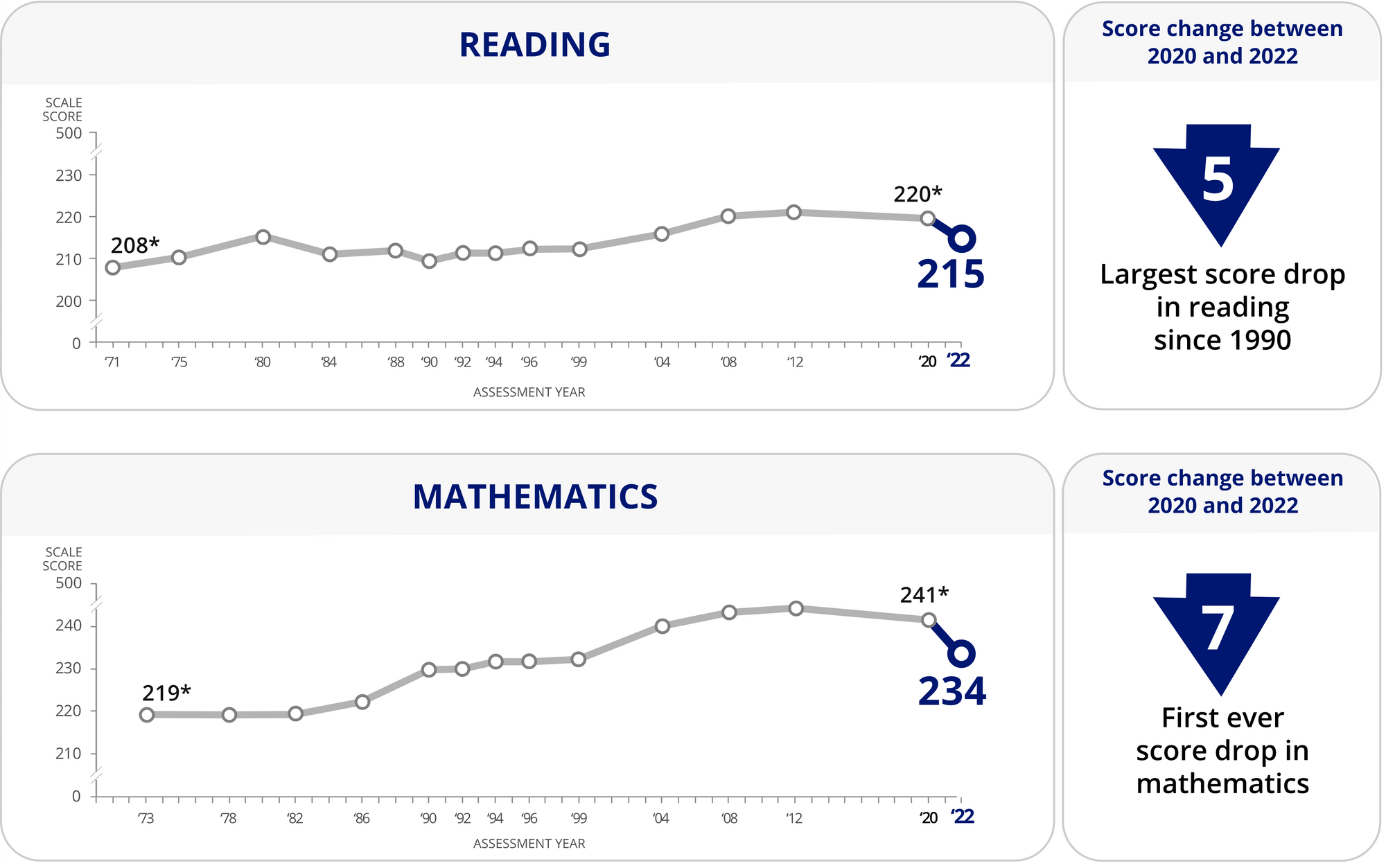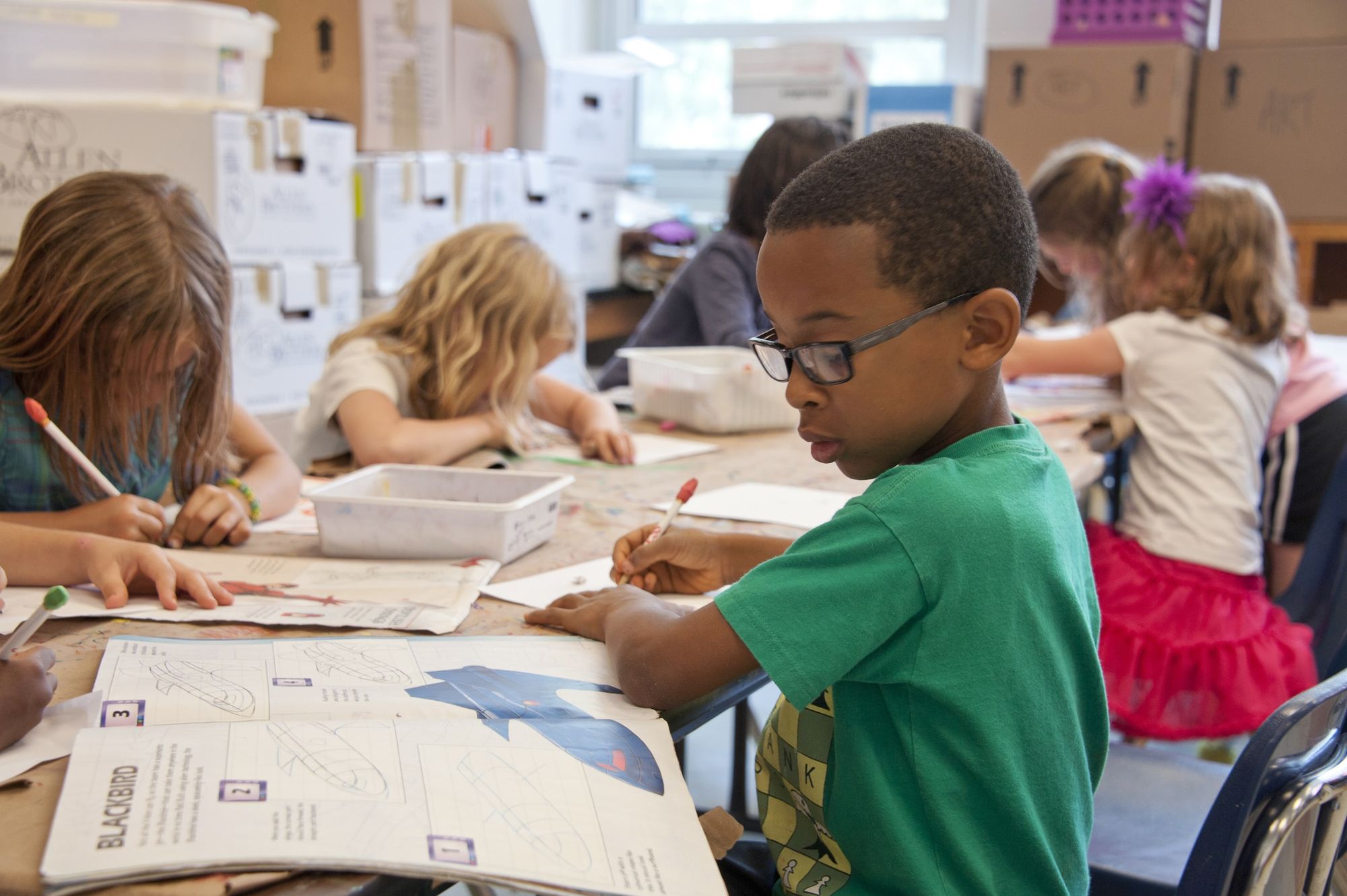School closures during the COVID-19 pandemic caused a historic decline in American 9-year-olds’ reading and mathematics scores, according to new national test results. The alarming results confirmed the worst fears of those concerned that prolonged school closures would widen the academic achievement gap.
Peggy Carr, commissioner of the National Center for Education Statistics, described the declines on the 2022 National Assessment of Educational Progress (NAEP) as ‘historic’:
These results are sobering. It’s clear that COVID-19 shocked American education and stunted the academic growth of this age group.
The long-term NAEP has tracked American students’ academic performance since the early 1970s. The 2022 test found that 9-year-olds’ average scores dropped by 5 points in reading and 7 points in mathematics, which represented the “largest average score decline in reading since 1990, and the first ever score decline in mathematics.”

The test scores also revealed that academic achievement gaps grew during the pandemic.
The test scores of children from lower-income households declined more than their peers. Children who are eligible for the National School Lunch Program declined by 6 points in reading and 8 points in mathematics between 2020 and 2022 compared to 3 and 5 point declines in those subjects among children who are not eligible.
Black children’s math scores dropped by 13 points compared to a 5 point decline among White students, which “resulted in a widening of the White-Black score gap from 25 points in 2020 to 33 points in 2022,” according to NAEP.
The 2022 assessment also examined students’ learning experiences during the pandemic. The report found that higher performing children had greater access to resources while schools were operating remotely during the 2020-21 school year:
Of the 70 percent of 9-year-olds who learned remotely during the 2020–21 school year, higher performers (those at or above the 75th percentile) had greater access to a desktop computer, laptop, or tablet all the time; a quiet place to work available some of the time; and a teacher available to help them with mathematics or reading schoolwork every day or almost every day compared to lower performers (those below the 25th percentile).
These national test score declines and new insights into the learning experiences of children during school closures confirms what many of us warned would happen if public schools closed for long periods during the pandemic.
In August 2020, I testified before the House Select Subcommittee Committee on the Coronavirus Crisis. I urged Congress to understand the likely harm that would be done to disadvantaged children if schools remained closed during the 2020-21 school year.
Researchers studying the educational effects of school closures on students’ learning warn that school closures will lead to months of lost learning. This academic regression will be most acute among economically disadvantaged children, who have fewer resources and opportunities to learn outside-of-school than their more affluent peers. As a result, we risk expanding the academic achievement gap for a generation of American children.
National and state education leaders can’t undo the harm caused by the widespread and unnecessary school closures during the 2020-21 school year. But they can begin to help disadvantaged students recover.
A good place to start would be to give parents control of the $130 billion in unspent federal emergency education funds that have been distributed to states and school districts during the pandemic. Allowing parents to use these funds to hire tutors and provide better learning opportunities for their children would begin to help reverse these historic learning losses before it is too late.

